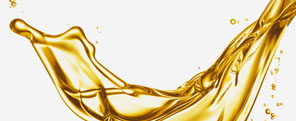 |
|||||||
|
In any metalworking facility, the proper selection and care of coolants is critical to the quality of your output and the overall efficiency of your operation. It took time to identify the right fluids for your application and for your operation. Having found them, it is wise to start and maintain a program that manages them to your advantage. Such a program would come into play in the purchase of fluids, their receipt and storage, and the monitoring of their use. The information generated through formal fluid management and consumption tracking will yield benefits to your plant through the efficient and safe manufacture of products. Coolant storage, for example, may be treated too casually, with fluids stored outside or in conditions which permit the ingress of moisture or other contaminants that can shorten the service life of the fluids. Similarly, many fluids have a limited shelf life, so fluid storage should be organized in a first-in first-out (FIFO) configuration, ensuring that the oldest fluids are used first. Finally, tracking fluid usage is important to defining a baseline pattern for your operation. Any significant deviations from this baseline could be symptomatic of a serious problem. This is where we introduce the concept of fluid turnover rate. Turnover Rate as a Diagnostic Tool Turnover rate is the time it takes for the system to use the amount of concentrate initially required to fill the sump. Rates vary by the type of fluid in use. For water soluble cutting fluids, 4-6 weeks might be an acceptable range; for semi-synthetic oils 6-8 weeks; and for synthetic oils 8-10 weeks. Additionally, a number of other factors that vary from plant to plant affect turnover rate. These include spillage, leaks and evaporation; water hardness; biological contamination; number of machines running on the system; number of shifts per day, etc. Many variables affect turnover rate, which is why a formal coolant management system can help establish an acceptable baseline for your operation. Any significant deviation from your baseline turnover rate should be a warning to managers to do an audit of the operation to correct any persistent problems. High Turnover Rates Mean Short Turnover Times Low Turnover Rate Means Long Turnover Times Acculube Wants to Help You Get it Right
|

|
||||||
|
|||||||
|
|||||||
Accurate Lubricants & Metalworking Fluids, Inc.• 403 Homestead Avenue; Dayton, Ohio 45417 USA • Phone: 937-461-9906 Fax: 937-461-9917
|
|||||||
